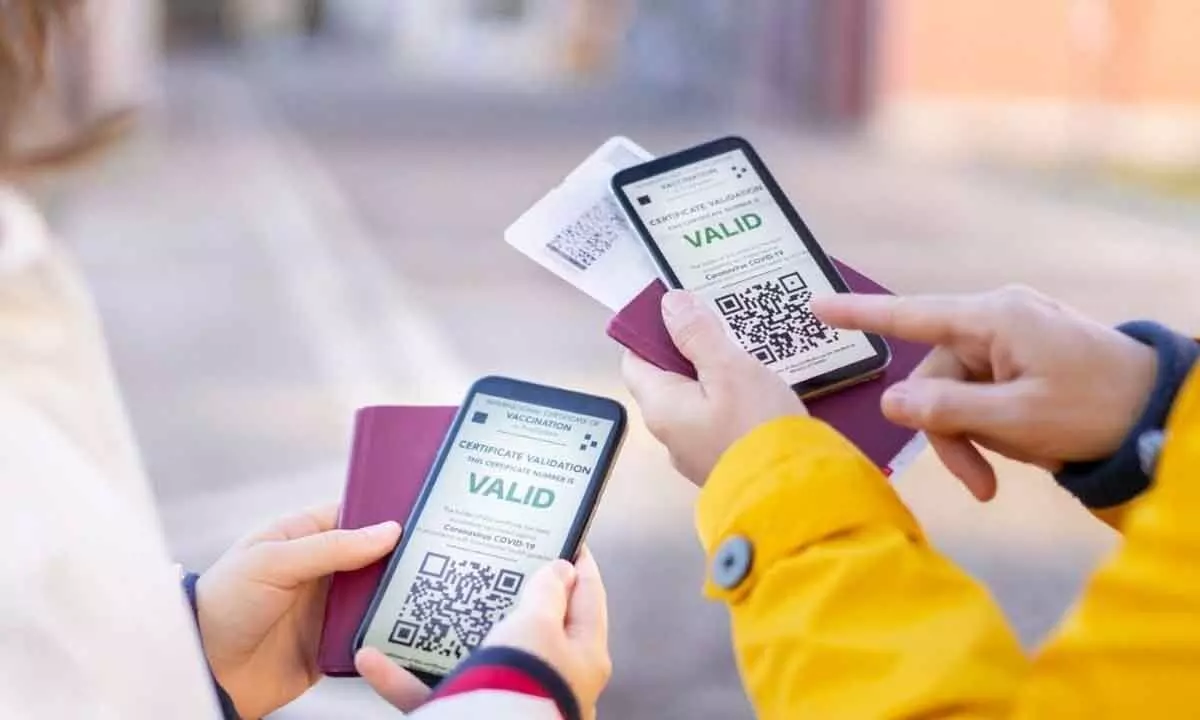The ‘here to stay’ digital passports will bolster travel convenience
The next generation of e-passports will become advanced 'smart objects'
image for illustrative purpose

Finland became the first country to launch digital passports, aiming to streamline and enhance international travel. Finnish travellers departing from Helsinki to the UK now have the option to present a digital ID on their mobile device instead of their physical passport. The Finnish Border Control has noted that this marks the first instance worldwide where a digital passport is accepted in a genuine border control setting
The passport format that was defined in 1920 remains unchanged. The booklet size is the familiar B7 format (125 × 88 mm or 4.921 × 3.465 in).
But unlike ordinary passports, the electronic passport has a contactless microprocessor that stores a digital version of the ID photo and the entire ID data found on the first page of the paper passport.
Besides, digital fingerprints can be stored.
In this case, it is called a biometric passport or second generation of electronic passport or e-passport.
Introducing a microprocessor-based passport has also been the catalyst for reengineering life cycle processes, from enrollment to issuance. It is now facilitating border control as automatic border control gates are being implemented in airports.
The new US passport, the new 2020 UK passport, the Norwegian passport launched in 2018, and the Finnish passport launched in January 2017 stand out as four examples that exemplify this trend.
The next generation of electronic passports will be faster and become advanced 'smart objects' and include new electronic features.
They will soon digitally store travel information such as eVisas and entry/exit stamps to support more efficient immigration control.
With LDS2 (logical data structure version 2), the new generation of electronic passports will move from read-only to read-and-write. The ICAO NTWG (New Technologies Working Group) undertook the LSD2 conception phase in 2016 and is progressing fast. With over 1,000 million ePassports in circulation, smart borders and smart airports are emerging faster.
Combined with a strong push behind biometrics (particularly face recognition), they open the doors to a comprehensive range of automated, self-service airport facilities for passengers, from check-in to immigration control and boarding.
However, biometric passports also present a number of challenges. Interoperability and trust are essential so that authorities can instantly recognize authentic passports from other countries.
In addition, electronic passport chips must support upcoming International Civil Aviation Organization (ICAO) standards such as LDS 2.0, which will enable storage of both personal biometric data and travel records like visas on the chip. Durability and high-performance contactless capabilities are also key success factors.
According to Future Market Insights (FMI), over 264 million electronic passports were sold in 2018. The research company also forecasts a compound annual growth rate of 21% through 2028 for the e-passport market. It states that developing economies are still held back because of a lack of capital and technological know-how. They offer travellers a taste of cross-border movement that is as secure as it is swift and seamless.
The first E passport was issued in 2008 to then President Pratibha Patil and for Indian citizens in 2021. Since then the government has issued more than 20,000 official and diplomatic passports in electronic format.
It was announced in the Union Budget 2022 that Epassports will be rolled out as per international standards for general civilians. Subsequently, the it was announced that updated Epassports will be rolled out on Passport Seva Divas, June 24, 2023.
Finland became the first country to launch digital passports, aiming to streamline and enhance international travel. Finnish travellers departing from Helsinki to the UK now have the option to present a digital ID on their mobile device instead of their physical passport, according to Euronews. The Finnish Border Control has noted that this marks the first instance worldwide where a digital passport is accepted in a genuine border control setting, promising a more efficient and seamless travel experience.
Thales, the world’s leading supplier of ePassport solutions for more than 40 national programs worldwide, was recently awarded a new U.S. passport eCover contract with the U.S. Government Publishing Office (GPO) for up to the next 10 years.
Since 2005, Thales has delivered over 127 million eCovers and collaborated with GPO to provide secure technology and components for U.S. passport covers. GPO manufactures the U.S. passport—including many of its components—for the Department of State, which then personalises the book for American travellers, government officials, and diplomats.
Incorporating electronic security technology into highly-durable passport cover materials gives another degree of security, as the electronically stored data is safeguarded from alteration or forgery. Thales eCovers maximises and integrates all the attributes required in an ePassport-highest security, durability and aesthetics.

